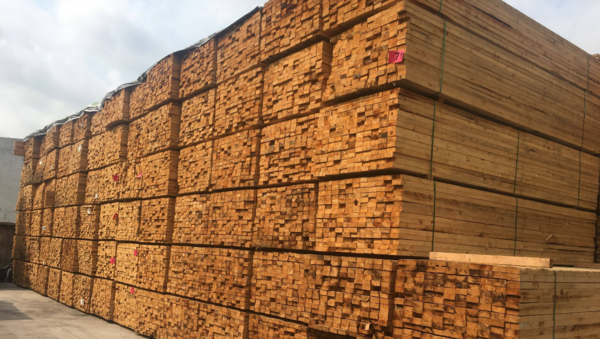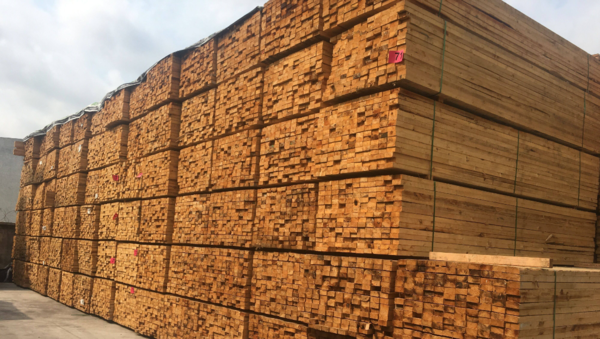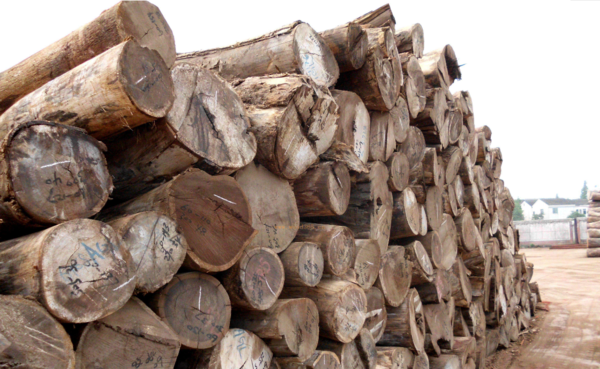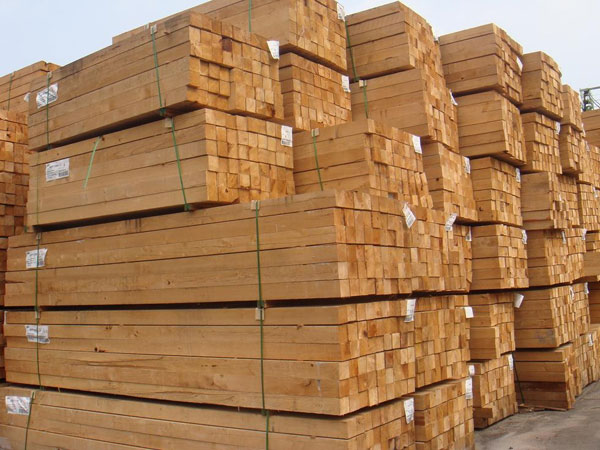Timber shortage may become a long-term trend in the global timber market!
Source:Global magazine
The "timber crisis" is spreading globally.
According to data from Random Lengths, a timber industry research organization, since 2020, U.S. timber prices have risen in volatility. On May 17, 2021, they reached a record of US$1,495 per thousand board feet, a 318% increase from April 2020.
In the United Kingdom, the price of building materials, including timber, has been rising for seven consecutive months, the highest rate of increase since records began in 1997.
At present, the price of construction timber in Germany has soared to twice that of last year, and the price of roof slats has reached three times that of last year.
The soaring global timber prices have made the supply shortage problem worse, and the "timber crisis" seems to be spreading globally.
Price rises, rises, rises
Global timber prices have generally risen since the third quarter of 2020. The sawn log price index and the IMF global hard sawn timber and hardwood prices have all seen obvious upward trends. Timber prices in the world’s major timber consumption and production markets have also been rising, and timber prices in many places have set historical records.
According to data from the Chicago Mercantile Exchange, the February 2021 timber futures contract price reached $1004.5 per thousand board feet, breaking the thousand yuan mark for the first time in nearly 20 years. Since then, the price of timber futures contracts has maintained an upward trend as a whole. On May 7, the price of the futures contract for July delivery reached US$1,686 per thousand board feet, a record price since 2001.
In fact, since the outbreak of the COVID-19 epidemic, the price of timber futures contracts has risen by nearly 214%, highlighting the lack of confidence in the market's timber supply capacity by demanders such as builders.

The increase in timber prices is due to the limited production capacity of timber-producing countries on the one hand, and on the other hand, the “global purchase” of major economies has exacerbated the shortage of timber.
For example, Canada is the main source of timber imports in the United States, but in the past five years, the Canadian timber industry’s production capacity has increased by only 1.6% annually, of which the timber production capacity in British Columbia has decreased by more than 30%, and the trade dispute between the United States and Canada over timber is difficult. The answer is that Canadian timber exports to the United States have been declining for four consecutive years.
Today, wood-producing areas in Europe and other places have become a new target for the United States. In 2020, U.S. timber imports from the EU increased by nearly 200% year-on-year, and imports in the first quarter of this year increased by 37% year-on-year. However, global timber production capacity is limited, and strong demand can only continue to push up timber prices and further exacerbate the shortage. The massive imports of wood from Europe by the United States have to a large extent led to a shortage of wood in the local European market.
Due to the soaring price, according to the data, the trade volume of major timber producing areas in the world has increased this year, but the actual trade volume has shown a downward trend. Among them, Russian sawn timber exports in the first quarter increased by 6.2% year-on-year, but exports fell by 9.4%; in the first two months, EU timber exports fell by 6.2% year-on-year, while exports rose by 6.6%, and timber imports rose by 3.1%. The decline in imports has increased by nearly 5%. Timber trade volume and trade volume are inversely correlated, highlighting the extremely limited supply of timber in the context of strong demand.
Comprehensive role of supply and demand, production capacity, and logistics
The stimulus policies of major economies have pushed up timber demand. At the same time, due to the impact of the COVID-19 epidemic, it is difficult to quickly recover timber production and cross-border transportation. The combined effect of multiple factors such as supply and demand and logistics has given birth to this "timber crisis."
First of all, economic stimulus policies have promoted the recovery of the real estate market and pushed up timber demand.
In response to the negative impact of the COVID-19 epidemic on the economy, major central banks around the world have "released water" one after another. The Federal Reserve has even initiated unlimited quantitative easing, and the US dollar interest rate has remained at a low level of 0% to 0.25%. The loose policy environment has reduced borrowing costs and stimulated the recovery of the real estate market in major economies.
Judging from the core indicators of the US real estate market, in April 2021, the annual rate of new housing starts in the United States reached 1.569 million units, an increase of 76% year-on-year, of which the number of new single-family housing starts increased by 26% year-on-year. The market predicts that in 2021, new residential construction in the United States will reach 1.6 million units, and it will further increase to 1.7 million units in 2022, which is expected to hit a 15-year high.
At the same time, since May 2020, the overall U.S. construction permits have shown an upward trend, reaching the highest level since 2007. The U.S. real estate market is expected to maintain a vigorous development trend in the future; the European Union Construction Industry Purchasing Manager Index (PMI) will be in 2021 In March, it broke through the line of prosperity and decline; the PMI of the British construction industry even hit a new high in 6 and a half years... The recovery of the real estate construction market directly drove the increase in timber demand.

Affected by the epidemic, people are isolated from home or work remotely, and residential house renovation and self-built houses have become new choices for the people, which has further increased the demand for wood.
Second, the limited recovery of timber production capacity has exacerbated market panic.
In recent years, affected by the slow global economic growth, the demand for timber and related products is insufficient, and the market oversupply is more common. Some timber production areas have cut production capacity, resulting in a lack of sufficient inventory in the market to cope with the skyrocketing demand for timber starting in the second half of 2020.
The COVID-19 epidemic has greatly restricted the recovery and expansion of timber production capacity. Data show that since the beginning of 2020, due to the difficulty of normal operation of factories and the inability of workers to work normally, the global timber felling and board production have dropped by about 30%, and the timber output of the main producing areas has declined to varying degrees.
For example, in the first 11 months of 2020, the output of sawn timber and board in Russia fell by 4.3% year-on-year, and the output of sawn timber in Finland fell by about 11.4% in the first three quarters.
In addition, in major timber producing areas such as Canada and Europe, wood pests have restricted the output of high-quality timber, and natural disasters such as typhoons and forest fires have also adversely affected timber stocks.
A series of factors have led to a serious shortage of global timber supply. Only a few markets such as Europe maintain a certain amount of inventory. Timber vendors give priority to buyers with high bids, pushing up timber prices and exacerbating market panic.
Finally, the hindrance of international logistics and transportation contributed to the "timber crisis".
In the context of the epidemic, operations in major ports around the world cannot be carried out normally, and operational efficiency has declined severely, resulting in port congestion, a large number of ships and containers being stranded, and shipping schedules for products including timber have been greatly extended.
According to data from the Shanghai Shipping Exchange, in April 2021, the on-time rate of the main global routes was 23.71%, a decrease of 2.4 percentage points from the previous month, and the port congestion and detention situation did not improve significantly.
Severe congestion in major ports has made the contradiction of global container shortage even more severe. According to data from Container xChange, a container circulation platform, since the second half of 2020, the container availability index of major ports in the world such as Shanghai, Qingdao, Antwerp, Hamburg, etc. has dropped below 0.5, and container turnover difficulties are common.
Severe congestion and shortage of containers have led to a sharp increase in international logistics freight rates. According to data released by shipping consulting company De Luli, the World Container Index (WCI) has risen from less than US$2,000 per 40-foot container in May 2020 to the current US$6,135.44 per 40-foot container. Shipping from Shanghai to some major European ports in which the price even soared above $9,000. Poor international logistics, insufficient capacity, and soaring freight rates have become important reasons for the increase in global timber prices and the prolonged supply time.
Strong demand will be a long-term trend
The current "timber crisis" is characterized by rising wood prices and severe shortages. It is a direct result of a chain reaction caused by accidental events such as the epidemic. Whether the crisis can be alleviated in the short term remains to be seen.
On the one hand, timber demand may remain strong. Due to the relatively low sensitivity of timber demand to prices, the skyrocketing timber prices are unlikely to have a significant inhibitory effect on demand. With the increase in vaccine coverage in major economies, the COVID-19 epidemic is expected to be alleviated to a certain extent, and the ensuing economic recovery will continue to support timber demand.
At the same time, the current supply of the US real estate market is still insufficient. As of the end of March this year, the US national real estate inventory was 1.07 million units, an increase of 3.9% month-on-month, but a year-on-year decrease of 28.2%, which is close to the historical low since statistics. The market believes that the United States is in a period of historic housing supply shortages. Summer is the traditional peak season for housing construction in the United States. The imbalance between supply and demand and seasonal factors are expected to stimulate the real estate market to further heat up and continue to drive U.S. timber demand.

On the other hand, the alleviation of the epidemic will gradually restore activities such as sawmilling and port transportation, which is expected to alleviate the shortage of timber and gradually stabilize timber prices.
In the long run, structural factors may have an impact on wood supply and demand.
On the demand side, global urbanization will continue to develop in depth. The United Nations predicts that by 2050, the proportion of the global urban population will increase from 56% to 68%, which will promote construction demand to remain strong. Major economies are committed to achieving the goal of carbon neutrality, and the construction market may shift from steel and cement to wood and other more environmentally friendly construction materials. Affected by this, market organization Gresham House predicts that global wood consumption will increase by about 170% in the next 30 years.
On the supply side, the world's existing forestry resources are mainly distributed in northeastern Russia and northern Canada, but the resources available for logging are relatively limited. At the same time, limited by natural conditions, it takes a long time for timber to mature, and major timber exporting countries such as Canada and Russia have tightened commercial logging and timber export policies. In the next 30 years, the growth of global timber production may be very slow.
It is speculated that strong demand and limited supply may become a long-term trend in the global timber market.
The source has been identified in this article. All copyrights belong to the original anthor. In case of infringement, please contact us.





 沪公网安备31010402003309号
沪公网安备31010402003309号



